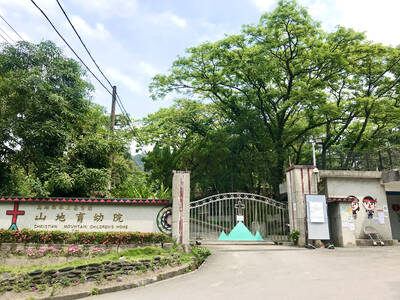In both of the books she has written about US presidents, Candice Millard has zeroed in on events that other historians largely overlook. Her first book, The River of Doubt, followed Theodore Roosevelt’s strenuous efforts to regain his confidence after his failed 1912 third-party bid for re-election and described his near-disastrous journey down the Amazon tributary of the title. The details of this trip were hardly unknown, but they were easily overshadowed by other aspects of Roosevelt’s hugely eventful life. Millard turned a relative footnote into a newly mesmerizing story.
Now she has chosen an even more neglected and fascinating subject: the 1881 assassination attempt on president James A. Garfield and the dreadfully misguided medical efforts to save his life. Had it not been for this botched treatment, Millard contends, Garfield would have been one more Civil War veteran walking around with a bullet lodged inside him. Had he survived to serve more than 200 days in office, he might have been much more familiar than he is to many students of White House history.
Destiny of the Republic, which takes its title from a fateful speech given by Garfield at the 1880 Republican National Convention, has a much bigger scope than the events surrounding Garfield’s slow, lingering death. It is the haunting tale of how a man who never meant to seek the presidency found himself swept into the White House. It rediscovers Garfield’s more surprising accomplishments. He was, among other things, a teenage worker on the Erie and Ohio canals, a brigadier general and a scholar who devised an original proof of the Pythagorean theorem at some point during the 17 years he spent in Congress.

Garfield’s transformative effect on the contentious 1880 Republican convention put an end to all that. At an exhausting point when more than 30 ballots had been cast, Garfield rose to speak out against the chaotic “human ocean in tempest” he was witnessing. “I have seen the sea lashed into fury and tossed into spray, and its grandeur moves the soul of the dullest man,” he said. “But I remember that it is not the billows, but the calm level of the sea, from which all heights and depths are measured.”
Delegates began unexpectedly throwing their votes to Garfield. He had not been a presidential candidate; now suddenly he was the Republican nominee. When he and his family were in the White House, Garfield wrote: “My God! What is there in this place that a man should ever want to get into it?”
Garfield particularly bristled at the calling hours a president then traditionally kept. During this time he met members of the public, many of them office seekers. He quickly noticed a particularly obnoxious visitor: Charles Guiteau, whose pestering was so extreme that Garfield cited him as an “illustration of unparalleled audacity and impudence.” The grandiose and frankly creepy Guiteau wrote so many letters that he became enough of a nuisance to be noticed by other members of the Garfield administration and family. A former lawyer and theologist who earned himself the nickname “Charles Gitout,” he met Garfield on numerous occasions before deciding to shoot him.
Guiteau, whose story has also been much overlooked, made no secret of his plotting. In a letter explaining his plans to the American people, he reasoned: “It will be no worse for Mrs Garfield, to part with her husband this way, than by natural death. He is liable to go at any time any way.” He scouted jails, deciding where he wanted to be incarcerated. He left instructions for General William Tecumseh Sherman, who would be marshalling troops for Guiteau. They protected the assassin from being killed by a mob before he could go to trial.
Destiny pursues many threads at first, including the political spoils system exploited by Senator Roscoe Conkling (who forced Chester A. Arthur on Garfield as a vice president); Alexander Graham Bell’s experiments with induction balance; and Joseph Lister’s claims that antisepsis was crucial in warding off infection. All of these elements converge in Millard’s gripping account of Guiteau’s attack.

Even by the standards of Ukraine’s International Legion, which comprises volunteers from over 55 countries, Han has an unusual backstory. Born in Taichung, he grew up in Costa Rica — then one of Taiwan’s diplomatic allies — where a relative worked for the embassy. After attending an American international high school in San Jose, Costa Rica’s capital, Han — who prefers to use only his given name for OPSEC (operations security) reasons — moved to the US in his teens. He attended Penn State University before returning to Taiwan to work in the semiconductor industry in Kaohsiung, where he

On May 2, Chinese Nationalist Party (KMT) Chairman Eric Chu (朱立倫), at a meeting in support of Taipei city councilors at party headquarters, compared President William Lai (賴清德) to Hitler. Chu claimed that unlike any other democracy worldwide in history, no other leader was rooting out opposing parties like Lai and the Democratic Progressive Party (DPP). That his statements are wildly inaccurate was not the point. It was a rallying cry, not a history lesson. This was intentional to provoke the international diplomatic community into a response, which was promptly provided. Both the German and Israeli offices issued statements on Facebook

May 18 to May 24 Pastor Yang Hsu’s (楊煦) congregation was shocked upon seeing the land he chose to build his orphanage. It was surrounded by mountains on three sides, and the only way to access it was to cross a river by foot. The soil was poor due to runoff, and large rocks strewn across the plot prevented much from growing. In addition, there was no running water or electricity. But it was all Yang could afford. He and his Indigenous Atayal wife Lin Feng-ying (林鳳英) had already been caring for 24 orphans in their home, and they were in

Australia’s ABC last week published a piece on the recall campaign. The article emphasized the divisions in Taiwanese society and blamed the recall for worsening them. It quotes a supporter of the Taiwan People’s Party (TPP) as saying “I’m 43 years old, born and raised here, and I’ve never seen the country this divided in my entire life.” Apparently, as an adult, she slept through the post-election violence in 2000 and 2004 by the Chinese Nationalist Party (KMT), the veiled coup threats by the military when Chen Shui-bian (陳水扁) became president, the 2006 Red Shirt protests against him ginned up by